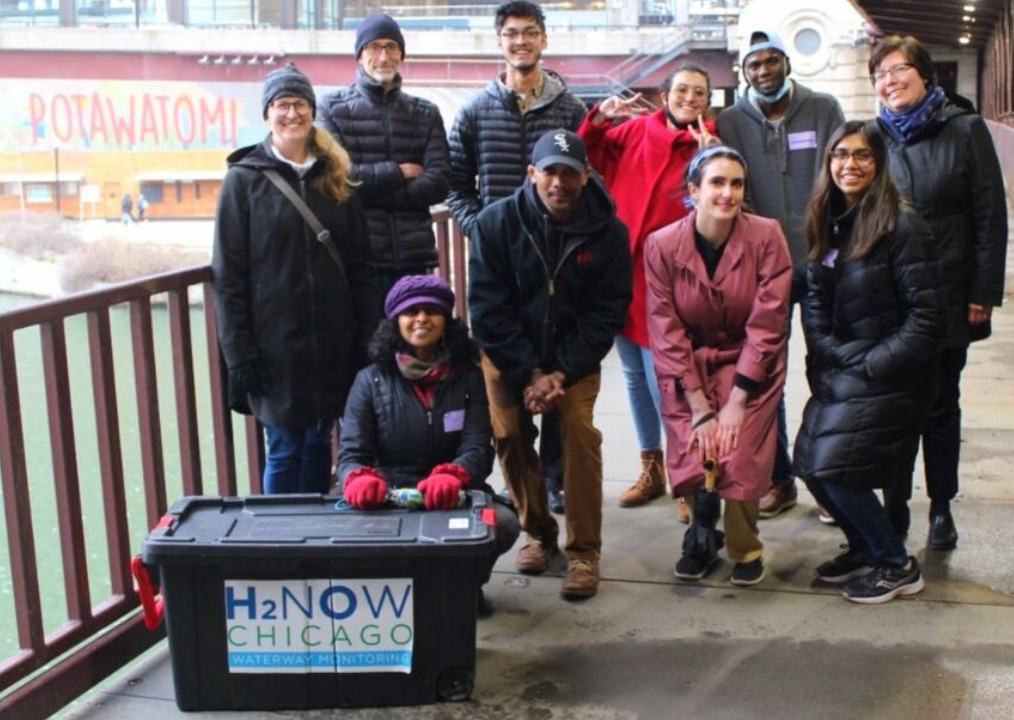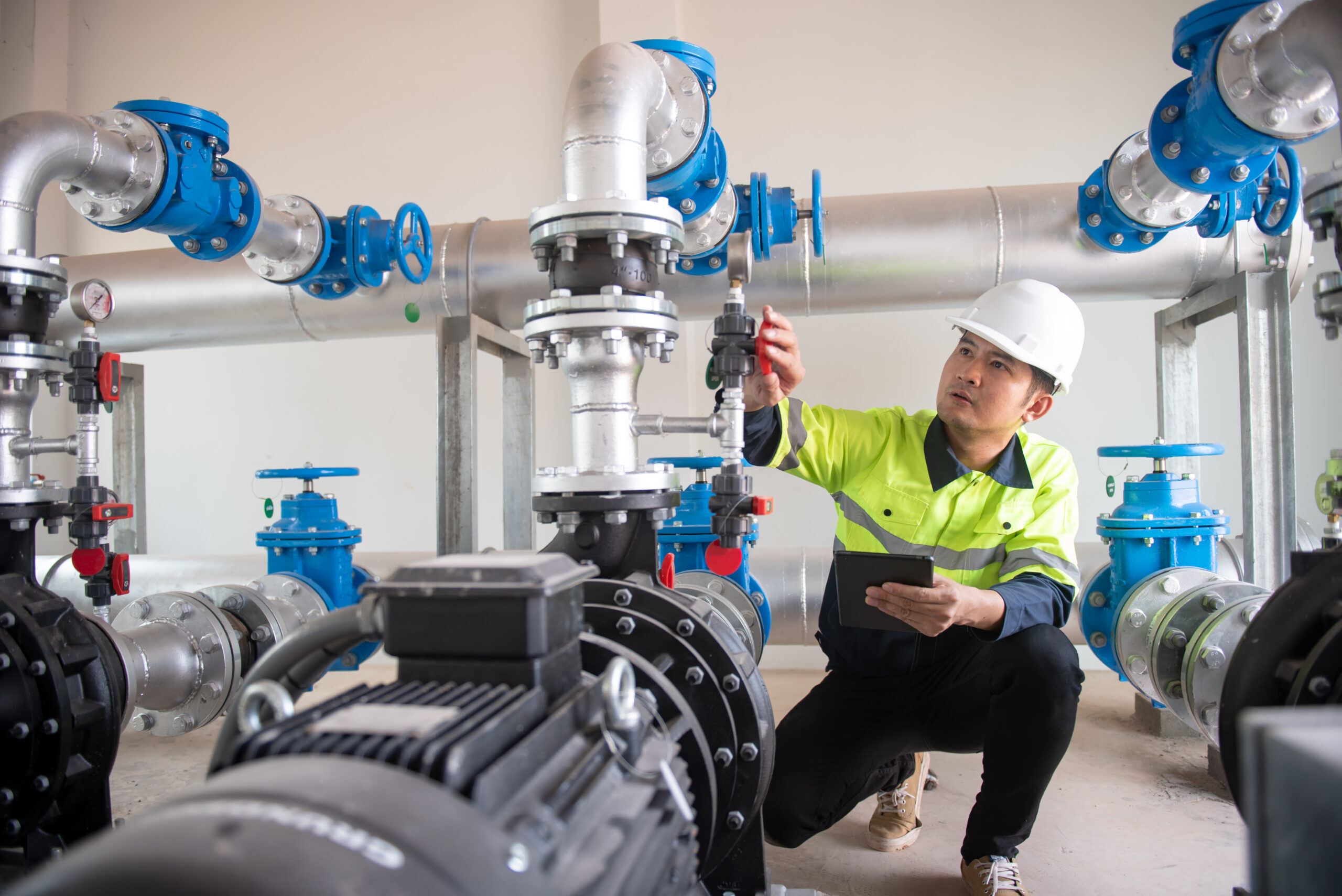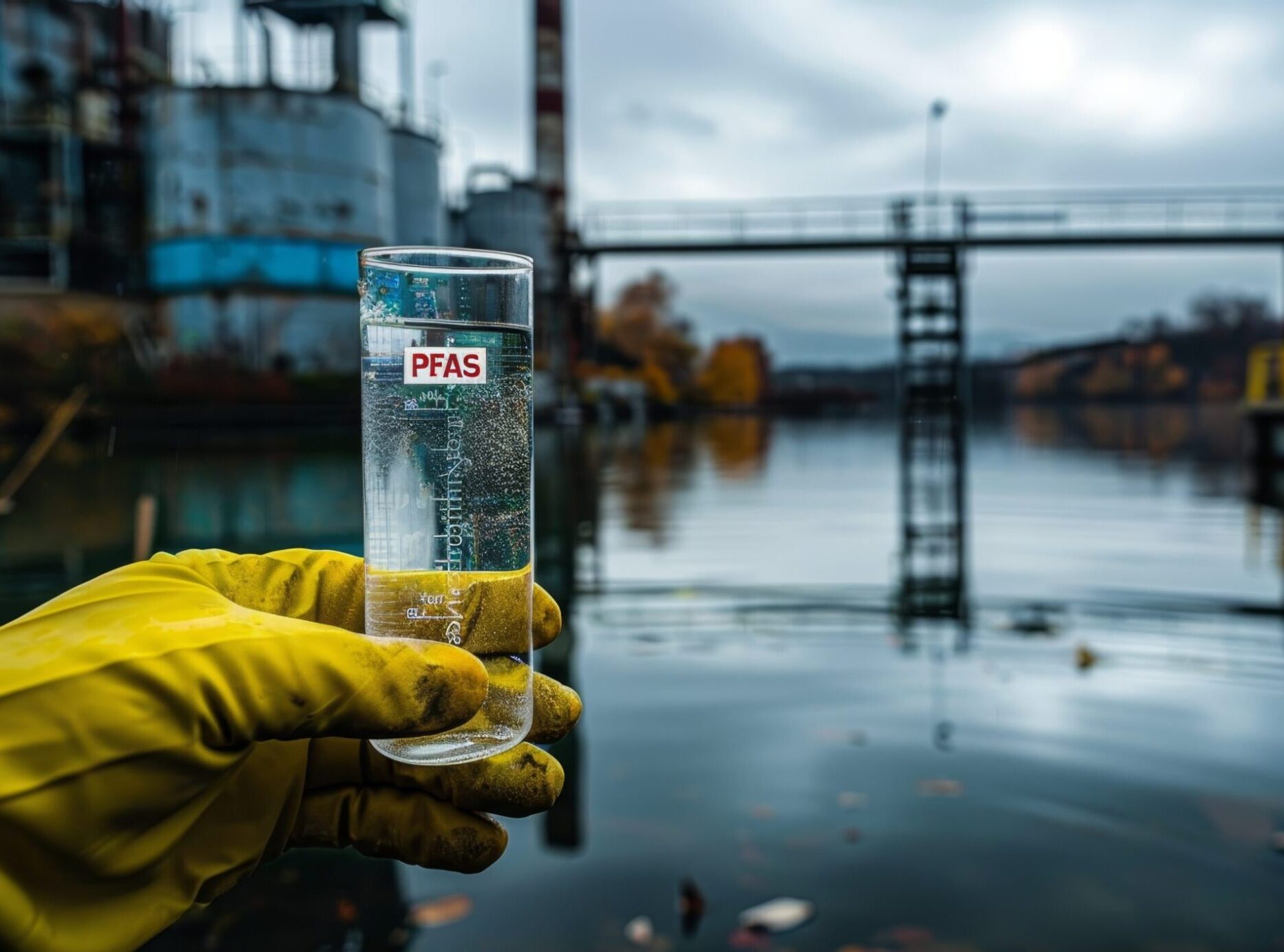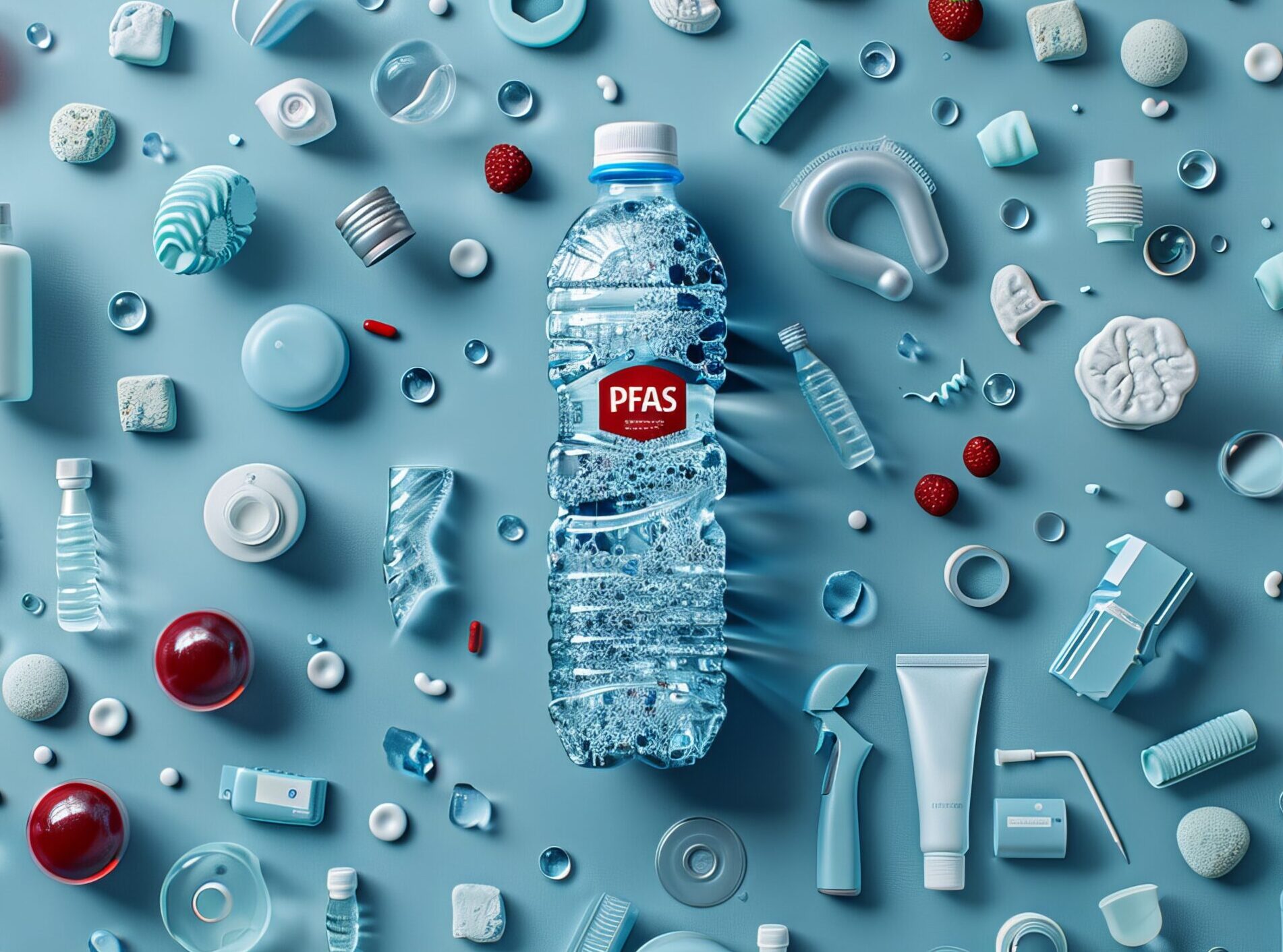Return of H2NOW Chicago, which provides real-time Chicago River water-quality data, nears
H2NOW Chicago — the testing platform developed by Current – is gearing up for its second season of providing real-time water-quality information about the three branches of the Chicago River. Data is based on sensor readings collected and communicated by multi-parameter probes installed in Lincoln Park, Bridgeport, and the Loop as well as on tests performed on a near-daily basis by Current’s staff and volunteers.
Chicagoans have long wondered and worried about the quality of the water in the river that makes their city so beautiful. The H2NOW Chicago project now offers visibility into river water quality. While the initial goal of H2NOW is to inform the public, the long-term hope is that this information will lead to improvements that will eventually make it safe for people to swim in the river. Read on to learn how our team of passionate water stewards are tackling this issue.
Latest Developments
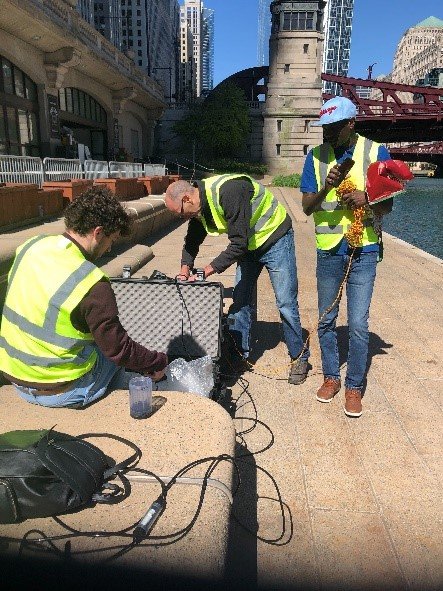
The team started preparing for installation on May 19 by testing the probes in the same bucket and comparing their sensor readings against each other. You can see how tryptophan-like fluorescence (TLF), turbidity, and temperature compare on the plot below.
We saw small differences in the TLF readings, but overall, there was good agreement among the probes. The same test will be done at the end of this year’s deployment.
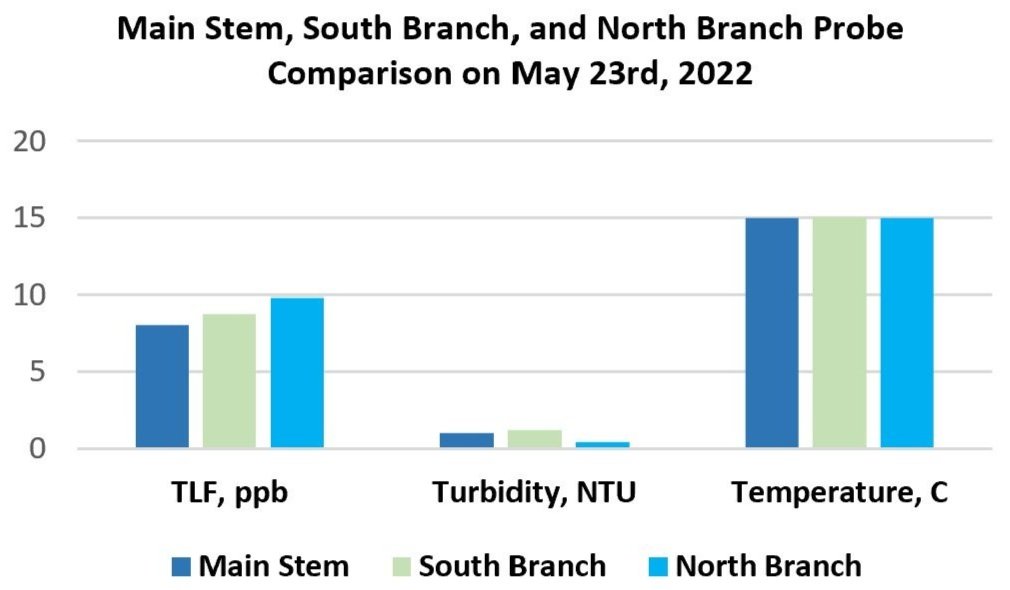
While performing the “bucket test,” the team took a picture of the sensors. The larger sensors are to detect TLF and colored dissolved organic matter, or CDOM, a new optical sensor installed this year. Other sensors measure turbidity, temperature, and specific conductivity (also new in 2022). A wiper brush in the middle cleans the optical sensor surfaces immediately before each reading is taken.

Like last year, all three monitoring sites are equipped with solar panels to power the probes during the day and recharge batteries for overnight data collection. With this setup, the probes provide real-time water quality assessments every 15 minutes using an environmentally friendly form of energy.
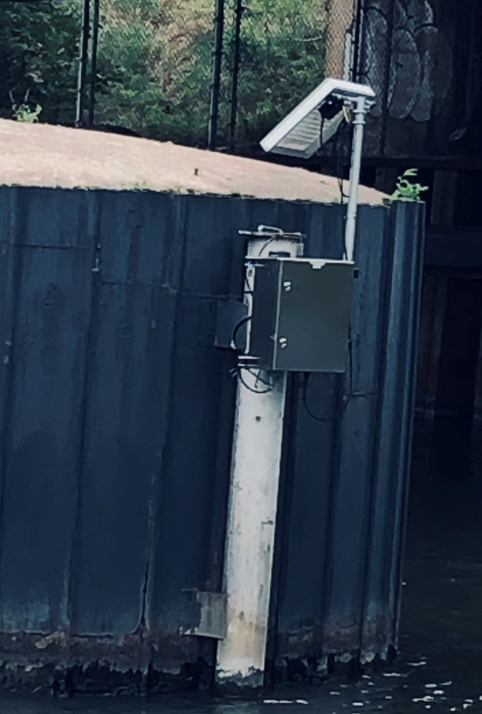
All three Proteus Instruments probes were installed on May 24 with the help of the Metropolitan Water Reclamation District’s River Monitoring Crew. Prior to installation, the team used the probes to get sensor readings along the cross-section of the river near the monitoring sites. These tests helped us see whether the sensor readings in the center of the channel were significantly different from the readings near a bank. It doesn’t look like they are, which means that the water in the river is well-mixed.
The team will continue to take water samples from all three probe locations throughout the summer and will use fecal coliform test data to evaluate the accuracy of microbial level estimates provided by the real-time data system. Water quality will be considered Good (safe for contact) if fecal coliform levels are below 200 CFU/100 mL. If fecal coliform estimates range between 200 and 1000 CFU/100 mL, Low Caution will be advised, and above 1000 CFU/100 mL, a High Caution warning will be displayed on the gauges at h2nowchicago.org.
One of the biggest differences from last year’s assessment methodology is that this year we will be using a new model, which will not be based on TLF readings adjusted to temperature alone. In addition to TLF and temperature, it will account for turbidity and specific conductivity – this approach is different from the model used by Proteus Instruments and the team believes it is better suited to the Chicago River conditions. Because of this, we will no longer display TLF numbers on our gauges. The new gauge design will look similar to the picture below:
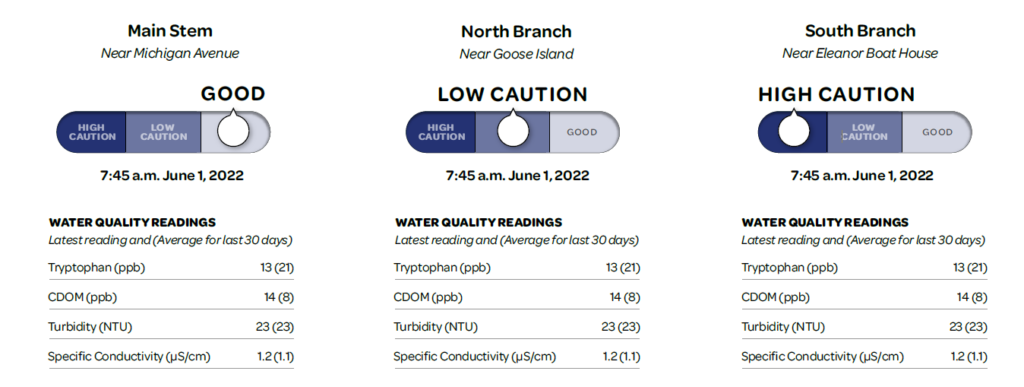
For the updated assessment methodology explanation, visit h2nowchicago.org.
As we work hard on making the site ready for the public, we are also preparing to celebrate our achievements thus far. If you see our team out on the River this season, please stop by and say hello!
The team hopes that Chicago residents and visitors will find H2NOW Chicago helpful when deciding whether to go kayaking or enjoy a nice cool-off walk along the river. Please share this post with your friends and family to spread the word!
